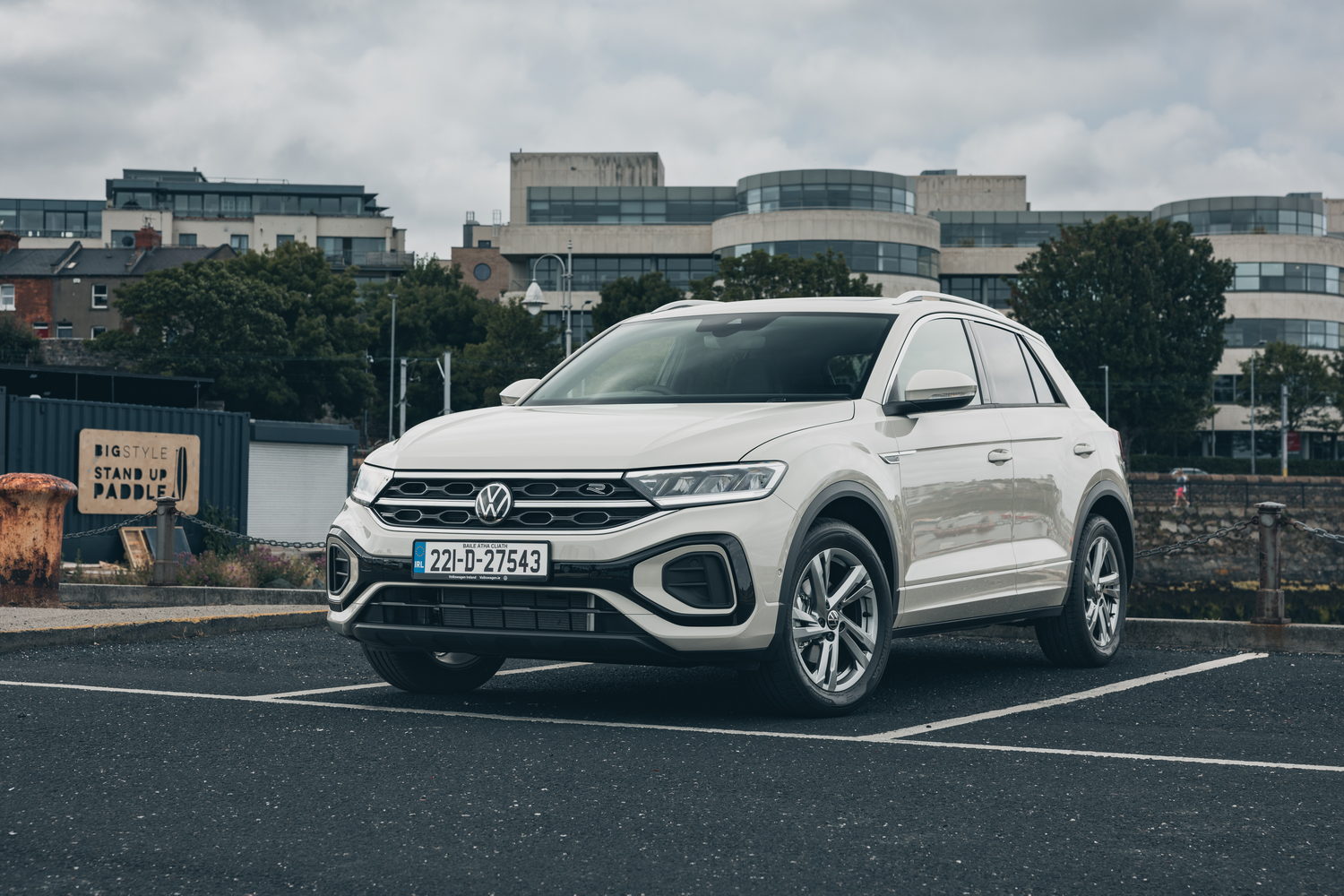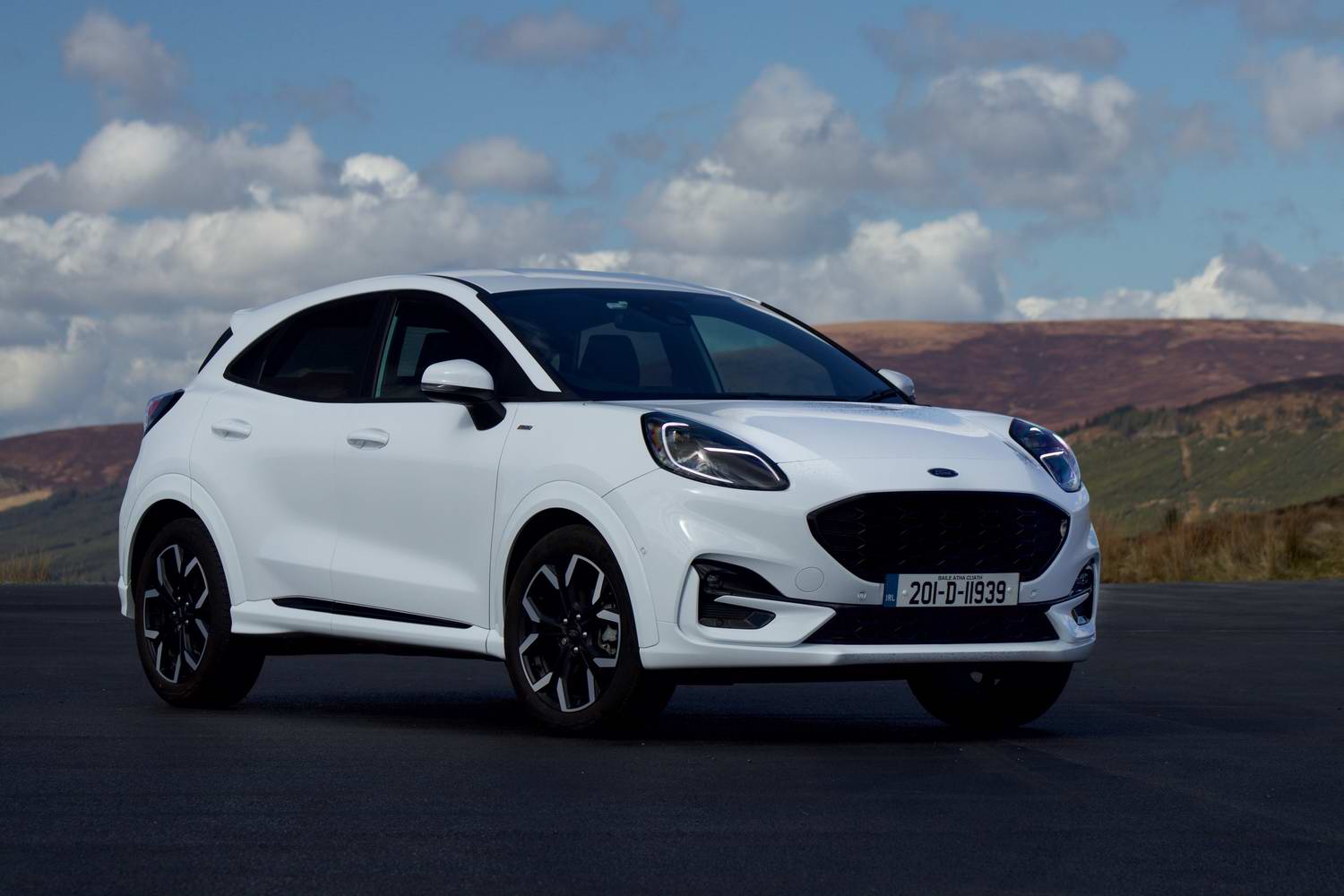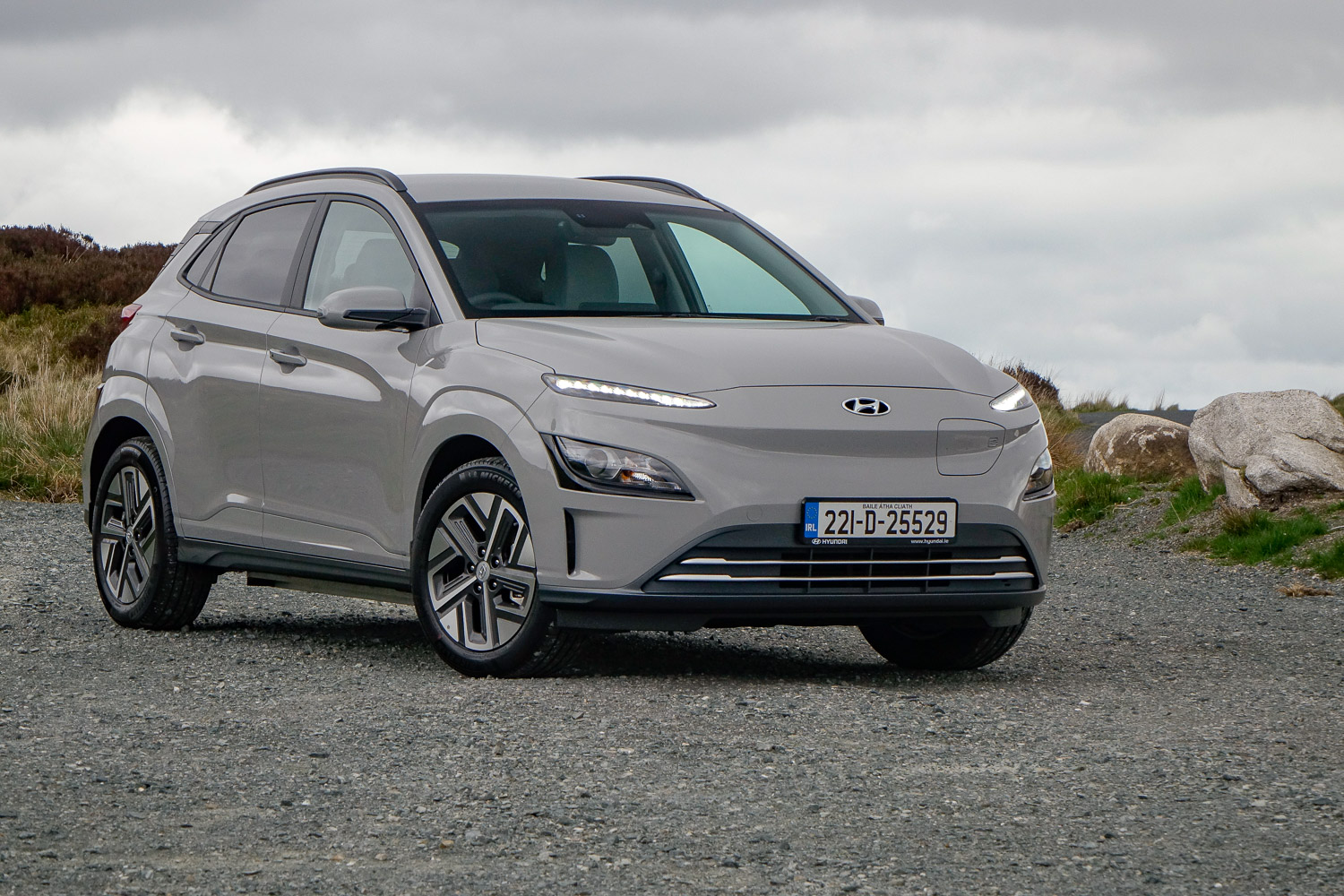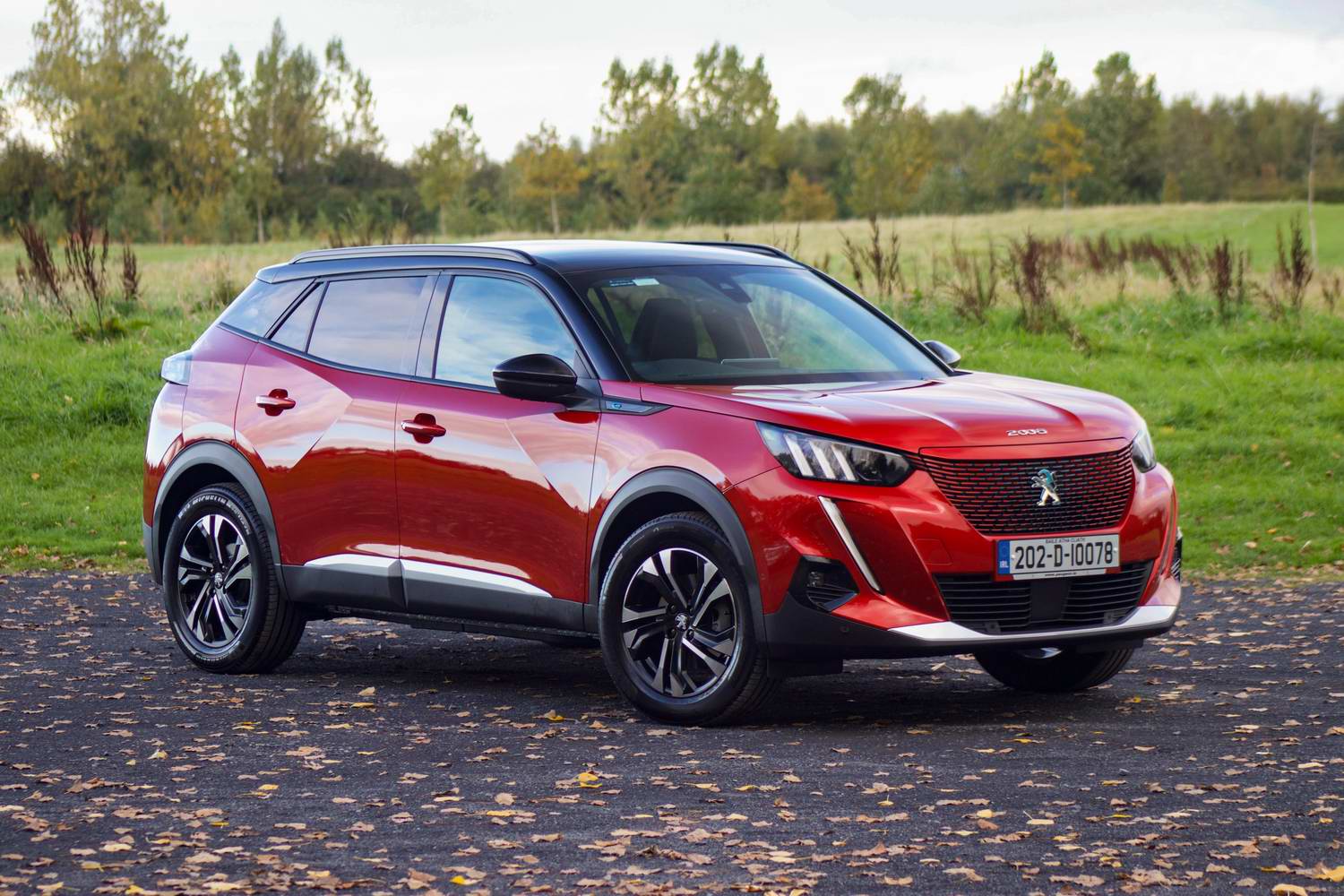Volkswagen T-Roc overview
The Volkswagen T-Roc arrived in 2017 with quite the weight of expectation resting on its chunky shoulders. Given the insane clamour for SUVs and crossovers (which has hardly abated at all since) it was fully expected that a crossover that was roughly Golf-sized and only slightly more than Golf-priced would eventually, effectively, become the new Golf and quickly rise up the ranks to become VW's best-seller.
In the end, that didn't happen. In the meantime, the world was overtaken by crisis after crisis, electric cars stole the SUV's thunder to an extent (even if many of those self-same EVs are also SUVs), and the T-Roc got a little lost in the mix. It does now, in fact, actually out-sell the Golf in the Irish market (although in Europe as a whole the Golf remains king). But the vagaries of PCP rates and repayments mean that in Ireland, the bigger, pricier Tiguan now outsells both Golf and T-Roc. Buyers tend to migrate upwards when the difference in monthly repayments isn't so big, you see.
For 2022, VW has given the T-Roc a bit of a boost with some mild restyling and some equipment and trim updates. There are new lights, grille and bumper at the front with restyled air intakes and a dark finish for the lights, as well as an LED light strip running across the radiator grille. At the rear, there's a similar treatment and, again, dark-finished light lenses.
Inside, buyers now get digital instruments as standard, and the infotainment screen now sits up proud of the dashboard, while the materials used in the cabin have been improved (which desperately needed to be done). There's also a new touch-sensitive panel for the heating and air conditioning controls.
VW has boosted the T-Roc's safety levels too, with standard-fit, camera-controlled 'Front Assist' collision warning and emergency braking system as well as lane-keeping steering.
The engine line-up of 1.0-litre three-cylinder and 1.5-litre four-cylinder petrol, and 2.0-litre four-cylinder diesel engines has been carried over, but the T-Roc is lacking in any kind of electrical assistance. There's not a single hybrid, plug-in hybrid nor fully electric version in the line-up. Ireland gets just the standard five-door model, but others get to choose from a convertible version, and the high-performance, all-wheel drive, 300hp T-Roc R.
It is worth just briefly mentioning the colour of our test car. Called Ascot Grey, it's actually the base colour, and is available at no extra charge. It's a really pleasantly warm off-white solid colour, and it put us slightly in mind of classic 1960s VW Beetle colours, which can surely only be a good thing. A bit of nostalgia for a very modern car.
The Volkswagen T-Roc model range
The primary engine for the T-Roc is the familiar 1.0-litre TSI three-cylinder turbocharged petrol unit, developing 110hp. It's priced from €31,705 in Life trim; €33,850 in Style; €36,70 in Style Plus; €34,705 in R-Line; and €37,725 in R-Line Plus - which is the model that we're testing here. CO2 emissions start from 135g/km.
Next up is the 1.5-litre four-cylinder TSI turbo petrol, developing 150hp and costing €40,250 with a standard-fit DSG automatic gearbox in Style form. If you want that engine in Style Plus form, it's €43,295; €41,385 for R-Line; and €44,160 for an R-Line Plus. CO2 emissions start from 138g/km.
If you still want a diesel, you can have a T-Roc with the 2.0-litre, 116hp TDI four-cylinder turbodiesel engine, which will cost you €34,020 in Life trim; €36,165 as a Style model; €38,795 in Style Plus; €36,910 in R-Line; and €39,535 in R-Line Plus. There's no DSG option for the diesel, and CO2 emissions start from 122g/km.
Life models are pretty well equipped, coming as standard with a leather-wrapped steering wheel and gear shifter, digital instruments, a height-adjustable boot floor, 16-inch 'Chester' alloy wheels, surround lighting with welcome light, tinted rear windows, roof rails, LED front and rear lights, an eight-inch touchscreen with six speakers, internet connection and music stream software (which also includes wireless Apple CarPlay and Android Auto), rain-sensing wipers, a driver alert warning system, lane-keeping steering, radar-guided cruise control, two-zone climate control, park assistant with parking sensors, automatic high-beam control, a three-year subscription to VW's online 'WeConnect' services and voice control.
Upgrading to Style gets you shift paddles for the optional DSG auto, synthetic leather trim for the doors, microfibre seat trim and sports front seats, ambient cabin lighting with reading lights in the front and rear, dynamic headlights, a bigger digital instrument screen, 17-inch "Johannesburg' alloy wheels, silver roof rails, more chrome trim and body-coloured bumpers. Style Plus adds a panoramic sunroof, keyless entry, a rear-view camera and built-in navigation.
R-Line models get shinier dashboard trim, stainless steel pedals, nicer seat upholstery, 17-inch 'Valencia' alloy wheels, an R-Line body kit, an 'Eco' driving mode and mildly tuned sports suspension with upgraded 'Progressive' (that's Volkswagen-speak for variable-ratio) steering. R-Line Plus models get a panoramic sunroof, keyless entry, a rear-view camera and built-in navigation.
Volkswagen T-Roc interior
The T-Roc's cabin was, when it was first launched, the car's weakest point. Although it shared a lot with the Golf (not surprising, given the close mechanical relationship between the two cars) it just always had the whiff of cheapness about it, and some of the plastics and other materials used were definitely second-best to what the Golf was getting.
That has, thankfully, largely changed with this 2022 model year update, although it's worth pointing out that not only does the Golf still have a slight lead over the T-Roc in terms of perceived quality (i.e. the touchy-feely sensation you get when you actually grab hold of bits of the cabin), but other cars from within the Volkswagen Group - notably the Skoda Octavia - still look and feel a bit classier than this.
Nonetheless, and certainly in this R-Line Plus version with its ritzy 'Lava' black panels on the dashboard and centre console, the T-Roc's cabin is looking and feeling considerably smarter than it did. Smart enough for a car costing, in this trim, close to €40,000? Possibly not, but it's definitely better than it was.
The digital instruments are fairly simple, and can be configured either as a big navigation display (at least in this model, which does come with built-in nav), as digital copies of analogue dials, or as a sort of cubist display that brings the trip computer info to the fore. The new central touchscreen gets VW's latest MIB3 infotainment software, but the retention of physical controls such as a proper volume knob and another one for tuning or making menu selections makes it easier to use, and much less distracting when on the move.
Further down, the touch-sensitive climate control panel is essentially a copy of that used by the Tiguan, and it's fairly easy to use - certainly much easier than the screen-centric controls of the Golf, with its dreadful 'slider' temperature adjusters. Below that, you'll find two USB-C connectors (there are another two in the back).
In front of the gear lever, there's a big, open storage area that will easily swallow even a large-screen mobile phone, while further back in the centre console there are two cupholders and a slightly under-sized storage bin under the front-seat armrest. The front door bins are usefully big, but they're made of quite cheap, rough plastic so they don't do much for the overall sensation of improved quality.
The front seats, trimmed in a rather natty microfibre in this R-Line Plus model, with a faint tartan-like pattern presumably to put you in mind of a Golf GTI, are wonderfully comfortable and supportive.
In the back, there's usefully more headroom and legroom than you'd find in the Golf, and six-footers can get easily comfy back there. There's not really enough space in the middle to comfortably fit a third rear-seat passenger though. There are two sets of ISOFIX anchors, one for each outer rear seat, and there should be enough space to wrestle a bulky rear-facing seat in and out.
The boot is a useful size. Drop the adjustable floor right down and you have 445 litres to play with - a good bit more than the 380 litres offered by a Golf hatchback- and if you raise it up you lose a few litres but gain a flat loading floor. The rear seats split and fold in 60:40 formation, with a central flap for loading long, thin items. The seatbacks don't go completely flat, but they're pretty close, and you do get 1,290 litres of load space with them folded. You also get tie-down points, some shopping bag hooks and the rigid rear parcel shelf can be stashed under the boot floor, which is handy.
However, it's always worth pointing out that while the T-Roc is a reasonably practical alternative to the Golf, the sad fact is that there's an even more practical alternative that isn't offered for sale in Ireland - the Golf Estate. That has a 611-litre boot, a nicer cabin than the T-Roc and is better to drive and more economical to (ahem) boot. A shame that Irish buyers' estate car reticence has seen it retreat from VW Ireland's price lists.
The VW T-Roc 1.0 TSI driving experience
The first time I drove a T-Roc, it was the wrong T-Roc. It had been fitted with the same 230hp 2.0-litre TSI turbo engine as the then-current Golf GTI and I spent the entire drive waiting, in vain, for the excitement to kick in. The T-Roc is just not that kind of car, and fitting it with sporty engines is kind of to miss the point.
Here, with the 1.0-litre TSI engine, the T-Roc feels more at home and the mild tweaks made for the R-Line suspension feel well-judged. Indeed, this T-Roc R-Line Plus feels very much at home on the twisting, turning roads that loop out of Dublin and south-east to Wicklow via the Sally Gap. The 1.0-litre TSI engine is more willing and more enjoyable than its tardy 10.8-second 0-100km/h time might suggest, and if the 'Progressive' steering isn't exactly Lotus-like in its precision and feedback, then it's certainly good enough to make this three-cylinder engined crossover surprisingly enjoyable to drive on a switchback mountain route.
Of course, that kind of road will likely be alien to the majority of T-Roc drivers, but it's nice to know that it has the chutzpah to tackle it. I'm not sure I'd describe the driving experience as especially fun, but it's responsive enough and well-balanced enough to come through as entirely enjoyable.
In spite of the sporty tweaks for the R-Line version, this T-Roc rode bumps with a sort of firm comfort, and its overall refinement has definitely improved. Even the 1.0-litre TSI engine, which used to always make its presence known with a pronounced, but far from unpleasant, rasp, has now been quelled to the point where you really have to pay attention to realise that it's running on three cylinders rather than four.
Visibility out of the T-Roc is good when you're looking forward, but it's a bit compromised behind and over the shoulder by those thick rear roof pillars. Even so, the light steering and relatively tall seating position mean that it's a doddle to thread through urban traffic, and the fact that it's quite a bit smaller and narrower than a Tiguan really pays off when you get to a tight car park.
The 1.0-litre engine should also be economical in daily driving. VW quotes an official average of 6.0 litres per 100km, but I reckon a bit of care and attention might even see that fall to around 5.8 litres per 100km.
Overall, then, the T-Roc is perfectly pleasant to drive, and a very easy-going thing if you need to haul kids and their chattels around town. The only shame is the total lack of electrification options if you've got one eye on your environmental responsibilities, but VW has plans for an affordable all-electric crossover around this size, so watch this space.
Our verdict on the VW T-Roc 1.0 TSI R-Line
While the T-Roc did eventually do what we thought it would do - outsell the Golf, at least in Ireland - it hasn't quite been the sales superstar that we reckoned it would be. This mid-life update is unlikely to dramatically change that fact, not least given that the T-Roc is quite expensive compared to its major rivals - not to mention that it lacks a hybrid or electric version. For all that, though, it is still a handsome car, with a much-improved cabin and an entirely pleasant driving experience. This 1.0-litre TSI version feels like the sweet spot of the engine line-up, too.
What do the rest of the team think?
I find it very difficult to get even mildly interested in the T-Roc, if I'm honest. Yes, it has a much larger boot than the Golf, and the rear-seat accommodation is better, but I'd much rather a regular hatchback. Still, as Neil points out, the updates, subtle as they appear, have noticeably enhanced the car. That means those in the market for, perhaps, replacing an older T-Roc, will be pleased to upgrade to the new one.
Shane O' Donoghue - Editor



























